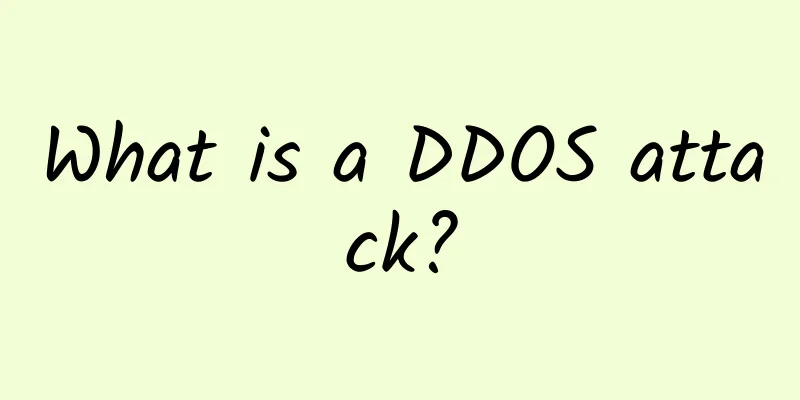What is a DDOS attack?

|
introduce The most basic DoS attack is that the attacker uses a large number of reasonable service requests to occupy too many service resources of the target, so that legitimate users cannot get service responses. DDOS attack is also called "distributed attack". It uses illegal data to flood network links. These data may flood Internet links and cause legitimate data flows to be discarded. DoS (Denial of Service) attacks are usually carried out in a one-to-one manner. When the performance indicators of the attack target are not high (such as low CPU speed, small memory or small network bandwidth, etc.), its effect is obvious. However, DDOS attacks are more terrible than DOS (Denial of Service) and are extremely large in scale. They usually target hundreds or even tens of thousands of computers in an attempt to flood the target machine, paralyzing it within 1 minute. Even if it is a giant machine, it is impossible to handle thousands or tens of thousands of target machines at once to receive so many data packets. Similarly, flood attacks are also a type of this type of attack. Features Classification A flood attack , also known as a Flood attack, is an attack in which an attacker sends a large number of disguised service request messages to the target through a botnet, proxy, or directly, eventually exhausting the target's resources. The large number of messages sent can be TCP SYN and ACK messages, UDP messages, ICMP messages, DNS messages, HTTP/HTTPS messages, etc. Malformed message attacks usually refer to attackers sending a large number of defective or special control messages, which cause the host or server to crash when processing such messages. Malformed message attacks include Smurf, Land, Fraggle, Teardrop, WinNuke attacks, etc. Special control message attacks include oversized ICMP messages, ICMP redirect messages, ICMP unreachable messages, and various IP message attacks with options. Scanning and probing attacks are potential attack behaviors that do not directly cause damage. They are usually network probing behaviors before attackers launch real attacks, such as IP address scanning and port scanning. Tiers DDoS attacks are classified according to the TCP/IP protocol layers: network layer attacks, transport layer attacks, and application layer attacks. Network layer: IP address scanning attack, most special control message attacks, Teardrop attack, Smurf attack, IP fragment message attack, ICMP Flood attack Transport layer: SYN Flood, SYN-ACK Flood, ACK Flood, FIN/RST Flood, TCP connection exhaustion attack, UDP Flood (including various reflection attacks), TCP/UDP fragment message attack, DNS Flood, DNS cache poisoning, and other attacks related to TCP, UDP messages and ports Application layer: HTTP Flood, HTTP slow attack, HTTPS Flood, SSL DDoS attack, SIP Flood Attack Methods DDoS attacks occupy a large amount of network resources through a large number of legitimate requests in order to paralyze the network. They can be divided into the following categories: 1. Interfere with or even block normal network communications by overloading the network. 2. Overload the server by submitting a large number of requests to the server. 3. Block a certain user from accessing the server. 4. Block the communication between a service and a specific system or individual.
How to defend? From the current perspective, although it is not easy to reduce the impact of DDoS attacks, necessary measures can still be taken to reduce losses. For enterprises, defending against DDoS attacks is just as important as deploying security solutions such as anti-virus protection, targeted attack defense, and data leakage measures. 【Editor's recommendation】
[Editor: Jiang Hua TEL: (010) 68476606] |
<<: What exactly is UWB technology?
>>: How to make the key cut in 5G network slicing?
Recommend
Who "raped" my network? Most likely it was the operator who "played rogue"!
Since I became the editor of the wireless network...
Pay attention to the "baton" of athletes to make business flow more efficient
At the Brazil Olympics, the 4×400 relay race is t...
Zhang Pingan, President of Huawei Consumer BG Cloud Service: Fertile Soil, Shining Stars, Win-win Digitalization
On June 22, DigiX2018 Huawei Terminal Global Part...
Ethernet Alliance Chairman: Flexible Ethernet is the key direction for future network development
In the past, when people mentioned Ethernet, the ...
Interview question: What happens when you enter a URL in the browser and press Enter?
The overall flow chart is as follows: 1. URL pars...
The long-awaited 5G messaging trial will be launched in late October or early November
"China Unicom and China Telecom are working ...
I'm a tough guy, so please take this detailed description of IPSec architecture.
IP Security Architecture, referred to as IPSec, i...
People's Daily: 5G+Industrial Internet releases multiplier effect
5G is an important direction for the upgrade of t...
LisaHost: Los Angeles dual ISP/residential IP hosting 10% off starting at $61/month, triple-network AS9929 backhaul
LisaHost recently added a series of Los Angeles d...
Faced with the policy requirement of "speeding up and reducing fees", why don't operators respond in this way?
As the Internet becomes more popular, the intelli...
What does a 5G base station look like? What is the difference between it and 4G?
This is what ordinary people think of 4G and 5G b...
Who moved my broadband? A record of the discovery and solution process of HTTP hijacking
The hijacking we encounter in daily life is usual...
Tencent Cloud New Year Procurement Season Hot Sale 2C2G3M Annual Payment Starting from 61 Yuan, Receive 1188-7700 Yuan Vouchers
Tencent Cloud is launching the 2024 Spring Procur...
US telecom companies agree to delay 5G deployment
Recently, the U.S. aviation and telecommunication...
What are the most common "wireless communication (data) transmission technologies" currently?
In recent years, with the development of electron...









